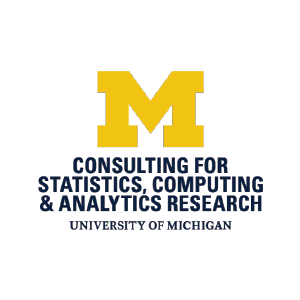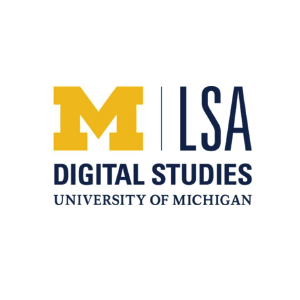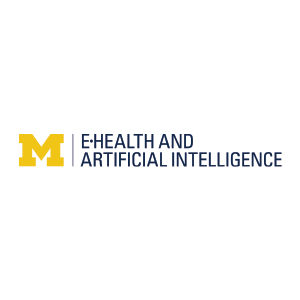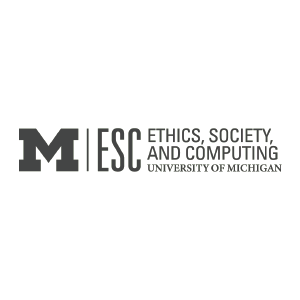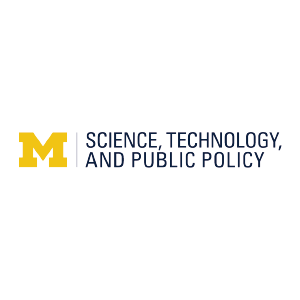Overview
The U-M Data Science and AI Summit is the largest annual data science and AI event on campus. This event brings together the U-M data science and AI research community and their external collaborators to build research vision and collaboration. It also showcases the breadth and depth of U-M data science and AI research, from theory and methodology development to the transformative use of data and AI to address scientific and societal challenges in all domains. The event is free for all attendees (U-M faculty, staff, and trainees, as well as industry, government and community members).
Summit Program
Note: all sessions held in Amphitheatre (4th) floor, with overflow seating in the East and West Conference Rooms, unless otherwise noted below.
check in early! The first 150 registrants to check in will receive special MIDAS swag.
Rebecca Cunningham, Vice President Emerita for Research; William G. Barsan Collegiate Professor of Emergency Medicine, University of Michigan
H. V. Jagadish, Director, Michigan Institute for Data Science; Edgar F Codd Distinguished University Professor and Bernard A Galler Collegiate Professor of Electrical Engineering and Computer Science, University of Michigan
View Opening Remarks Recording
Suresh Venkatasubramanian
Director, Center for Technological Responsibility, Reimagination, and Redesign, Data Science Institute, Brown University; Former Asst. Dir for Science and Justice, White House Office of Science and Technology Policy
The first FATML workshop was hosted at NeurIPS in Dec 2014, in a conference room that held 20 people. On Oct 30, 2023, in the East Room of the White House, the President signed an executive order on safe, secure, and trustworthy AI in front of over 100 people, with thousands more watching from the outside.
I was there for both of these events. And for many events in between. In this talk, I’ll talk about the journey from algorithmic fairness to AI governance, the coalition that advocated so fiercely for protections for people, and what comes next in the world of responsible AI.
Session Chair: Karandeep Singh (Associate Professor of Learning Health Sciences, Internal Medicine, Urology, and Information; Associate Chief Medical Information Officer of Artificial Intelligence, Medical School)
View Keynote 1 RecordingThe MIDAS Propelling Original Data Science (PODS) grant strongly encourages works that transform research domains through data science and AI, works that improve the reproducibility of research, and works that promise major impact and potential for significant expansion.
Nikola Banovic (Computer Science and Engineering)
Distinguishing trustworthy from untrustworthy Artificial Intelligence (AI) is of critical importance to broader societal adoption of AI, as AI gets deployed into high-stakes decision-making scenarios. However, end-users who are not computer-science savvy and who lack AI literacy fail to detect untrustworthy AI, despite existing approaches that attempt to promote AI trustworthiness by explaining and justifying AI decisions. Here, we propose to design and evaluate novel explanation mechanisms to help such end-users develop AI literacy they require to detect and counter untrustworthy AI, and in turn reduce their undue reliance on such AI.
Wenhao Sun (Materials Science and Engineering),
Dallas Card (School of Information)
Every year the UM College of Engineering receives tens of thousands of graduate applications, which faculty reviewers initially down-select using numerical indicators of merit such as GPA, test scores, and undergraduate school prestige. Unless an applicant meets a predefined numerical threshold, richer portions of an application—such as letters of recommendation and statement of purposes—may remain overlooked. This project aims to use Natural Language Processing methods to process graduate student applications and identify ‘hidden gem’ applicants, who are exceptional students from underrepresented or less-privileged backgrounds but have a strong propensity for PhD research.
Justine Zhang (Materials(School of Information),
Yanna Krupnikov (Communications and Media)
We will collect a novel, large-scale dataset containing transcripts of city council meetings in Michigan. On top of this data, we will combine domain expertise and machine learning pipelines to generate a rich set of annotations that capture key political qualities of the meeting discourse. This dataset will lay the groundwork for new empirical research on local governance, political division, discourse and civic participation.
Atiyya Shaw (Civil and Environmental Engineering),
Max Li (Aerospace Engineering; Industrial and Operations Engineering)
Both ground and air transportation systems have traditionally been assessed using system-based metrics that discount human experiences. While there is growing consensus that the management of these systems should integrate human-centered performance metrics, the primary sources of data to obtain these metrics are difficult to obtain, and the challenges are only increasing. This project aims to examine the potential of applying AI-based approaches to integrate passively collected travel data with rich behavioral insights from smaller scale passenger survey datasets, with the goal of linking across transportation modes and advancing multimodal transportation networks to be more equitable, accessible, and efficient.
Lise Wei (Radiation Oncology),
Liyue Shen (Computer Science and Engineering)
Our research project focuses on the development of an interpretable machine learning model designed to efficiently integrate multimodal data, including images and biological information. Our model also identifies crucial tumor changes over time, enabling personalized progression risk prediction for patients with poor prognosis head and neck cancer. This innovative approach aims to enhance the efficacy and precision of radiation therapy for high-risk patients, ultimately resulting in improved treatment outcomes and quality of life.
Maria Masotti (Biostatistics)
The tumor microenvironment is emerging as the next frontier in cancer research, where scientists are working to understand how the spatial interplay of multiple cell types surrounding the tumor affects immune response, tumor development, response to treatment, and more. Existing methods to quantify cellular interactions in the tumor microenvironment do not scale to the rapidly evolving technical landscape where researchers are now able to map over fifty cellular markers at the single cell resolution with thousands of cells per image. We will develop a statistically-oriented, scalable framework and software toolkit to help researchers discover novel associations between cellular cross-talk in the tumor microenvironment and patient-level outcomes such as response to treatment or survival.
Samet Oymak (Electrical and Computer Engineering),
Necmiye Ozay (Electrical Engineering and Computer Science; Robotics)
Powerful sequence models such as transformers have revolutionized natural language processing however their use in dynamic decision making remains unproven and unsafe. This project will unlock the potential of sequence models in data-driven control and enable their safe and robust use through innovative theory and algorithms.
Shravan Veerapaneni (Mathematics),
James Stokes (Mathematics)
Neural networks have achieved unparalleled performance on a diversity of tasks ranging from image processing to natural language generation. This project will leverage these successes to unravel the mysteries of quantum many-body physics. The project hinges on the idea that the quantum many-body problem can be posed as a machine learning problem for a quantum many-body wave function. By drawing upon state-of-art machine learning techniques, this project will make possible the application of neural-network techniques to quantum many-body problems of unprecedented scale, thereby unlocking a spectrum of applications in physics, chemistry and materials science.
Kai Zhu (School for Environment and Sustainability),
Kerby Shedden (Statistics)
We aim to improve the short-term and long-term predictions of airborne allergens under climate change, an emerging public health concern. To achieve this, we propose to develop novel data science tools to effectively assimilate multiple data sources and integrate various data-driven and process-based models. Beyond innovative methodology, our project also advances the biological understanding of pollen and fungal spores, and ultimately, our work helps alleviate the impacts of airborne allergens on people’s health.
Benjamin Goldstein, Joshua Newell, and Dimitrios Gounaridis, School for Environment and Sustainability
Measuring and mapping the environmental impacts of cities is critical to helping cities decarbonize and achieve other societal sustainability goals. However, data to support these efforts have historically been scarce. This undermines the ability of cities to become more sustainable, equitable, and just. Here, we highlight three data sources at the frontiers of urban sustainability assessment. First, the Good; Panjiva a structured repository of international trade data that is useful for reconstructing the supply chains that are both indispensable to modern cities and cause environmental degradation in far-flung locations. Second, the Bad; conflicting national dietary surveys (NHANES, FoodAPS) that hamper efforts to accurately measure urban food consumption and its related environmental impacts. Third, the Ugly; CoreLogic, the back-end of Zillow, an immense database of uneven building and property attributes for every land parcel in the United States, useful for analyzing everything from green gentrification to flood risk to urban energy consumption. Through three case studies, we demonstrate the potentials and pitfalls of using each data source. We then argue that although we live in an age of plentiful data, critical data gaps must be addressed to foster a sustainable urban future.
Tian An Wong, Mathematics and Statistics, U-M Dearborn
Recent analyses of predictive policing have shown the inherent biases in such systems. We show that the models considered in fact apply to proactive policing in general, which can be also viewed as a reinforcement learning system, and thus may also lead to over-policing. Time permitting, I will also discuss ongoing work assessing the efficacy and effects of the Detroit Police Department’s expansion of the use of ShotSpotter, a gunshot acoustic detection device, as an example of surveillance technology in current use.
Donglin Zeng, Biostatistics
Advances in technology are revolutionizing medical research by collecting large-scale data from each individual patient (clinical biomarkers, genomics, electronic health records), making it possible to meet the promise of individualized treatment and health care. The availability of these rich data sources provides new opportunities to deeply tailor treatment for each patient, while at the same time, posing tremendous challenges for analyzing highly complex and noisy data in personalized medicine discovery. In this talk, I will present an overview of machine learning methods we have recently developed in this direction: learning methods for the discovery of optimal dynamic treatment regimens, personalized dose finding, benefit-risk analysis, and medical diagnostics. For each method, we establish its theoretical statistical properties including consistency and learning rates. The comparative advantages over existing methods are demonstrated in simulation studies and applications to real world studies.
Session Chair: Kai Zhu, Associate Professor of Environment and Sustainability, School for Environment and Sustainability and Associate Professor of Ecology and Evolutionary Biology, College of Literature, Science, and the Arts
View Research Vision Talks Session 1 RecordingAll Research Posters
Showcasing a wide range of data science and AI research projects and grassroots data science and AI organizations
KEY:
Student Poster Competitor
Presenting Author
Tiffany Parise, EECS, University of Michigan
Vinod Raman, Statistics, University of Michigan
Sindhu Kutty, EECS, University of Michigan
Machine learning models are increasingly deployed to aid decisions with significant societal impact. Defining and assessing the degree of fairness of these models, therefore, is both important and urgent. One thread of research in Machine Learning (ML) aims to quantify the fairness of ML models using probabilistic metrics. To ascertain the fairness of a given model, many popular fairness metrics measure the difference in predictive power of that model across different subgroups of a population – typically, where one subgroup has historically been marginalized.
A separate thread of research aims to construct robust ML models. Intuitively, robustness may be understood as the ability of a model to perform well even in the presence of noisy data. Typically, robust models are trained by intentionally introducing perturbations in the data.
Our work aims to connect these two threads of research. We hypothesize that models trained to be robust are naturally more fair than those trained using standard empirical risk minimization. To what extent are fairness and robustness related? Do some notions of fairness and robustness have a stronger correlation than others? We investigate these questions empirically by setting up experiments to measure the relationship between these concepts.
To study trade-offs between robustness, fairness, and nominal accuracy, we use a probabilistically robust learning framework (Robey et. al., 2022) to train classifiers with varying levels of robustness on both real-world and synthetic datasets. We then use widely-used statistical metrics (Barocas et. al., 2019) to evaluate the fairness of these models. Preliminary results indicate that probabilistically robust learning reduces nominal accuracy but increases fairness with respect to the evaluated metrics. The significance of such a trade-off would be the conceptualization of fairness in terms of robustness and the ability to increase model fairness without explicitly optimizing for fairness.
Bernardo Modenesi, MIDAS, University of Michigan
Lucia Wang, Rocket Companies
Ameya Diwan, Rocket Companies
Individual fairness methods depart from the idea that similar observations should be treated similarly by a machine learning model, circumventing some of the shortcomings of group fairness tools. Nevertheless, many existing individual fairness approaches are either tailored to specific models or rely on a series of ad hoc decisions to determine model bias. In this paper, we propose an individual fairness-inspired, inference-based bias detection pipeline. Our method is model-agnostic, suited for all data types, avoids commonly used ad-hoc thresholds and decisions, and provides an intuitive scale to indicate how biased the assessed model is. We propose a model ensemble approach for our bias detection tool, consisting of: (i) building a proximity matrix with random forests based on features and output; (ii) inputting it into a bayesian network method to cluster similar observations; (iii) performing within-cluster inference to test the hypothesis that the model is treating similar observations similarly; and (iv) aggregating the cluster tests up with multiple hypothesis test correction. In addition to providing a single statistical p-value for the null hypothesis that the model is unbiased based on individual fairness, we further create a scale that measures the amount of bias against minorities carried by the model of interest, making the overall p-value more interpretable to decision-makers. We apply our methodology to assess bias in the mortgage industry, and we provide an open-source Python package for our methods.
Bernardo Modenesi, MIDAS, University of Michigan
Kleyton da Costa, Holistic AI
Cristian Muñoz, Holistic AI
Adriano Koshiyama, Holistic AI
This paper presents novel quantitative metrics to explain predictions from machine learning models. The metrics provide insights into model interpretability by leveraging feature importance estimates. In particular, the metrics quantify interpretability based on: 1) the distribution of global and local feature importances, assessing concentration versus spread; 2) the variability of feature impacts on model outputs; and 3) the complexity of feature interactions within model decisions. The metrics are model-agnostic, applicable to any trained classifier or regressor. Experiments on public datasets for credit risk prediction and real estate valuation demonstrate how the metrics facilitate comprehensive understanding of model behaviors. By summarizing feature importance insights into informative metrics, this work enables improved communication about model transparency between stakeholders, besides developing an open-source Python package for its implementation. The results highlight the ability of feature importance-based metrics to increase accountability and trust in artificial intelligence systems.
Lu Xian, School of Information, University of Michigan
Matt Bui, School of Information, University of Michigan
Abigail Jacobs, School of Information, University of Michigan
Targeted ads are important sources of information that shape how individuals get access to various opportunities and resources. Targeted advertising also introduces bias and discrimination against groups of users along the lines of race, gender, and so on. Audits of targeted advertising algorithms in various domains like employment have provided evidence for gender-based and race-based discrimination in ad delivery by focusing on the association between user profile and ad type and content. Building on prior work, our work provides an account for how biases reflected in targeted advertising reinforce historical inequalities in the housing and mortgage sectors in metropolitan cities. To demonstrate, we collected web traffic data within Google’s search engine results page at the zip code level in New York City in 2020 from a third party vendor. We combined the data with recently released appraisal record data at the census tract level, which serves as a proxy for home values. By triangulating those datasets with census data, we analyze how communities are differentially targeted using spatial analysis, clustering, and regression models. This work reveals how biased distribution of information and resources impacts individuals’ access to economic opportunities.
Kapotaksha Das, ITS Teaching & Learning, University of Michigan
This work focuses on the development and implementation of a Generative AI tool as part of an internship with ITS Teaching & Learning aimed at assisting graders in constructing improved rubric guidelines and ensuring consistency in grading across multiple sections and graders. The proposed system leverages Canvas data to automatically create custom prompts for each submission without any manual modification. Additionally, OpenAI’s model ChatGPT 3.5 Turbo is utilized to score and comment on a submission based on specified criteria. Scores are then retrieved and applied to normalize the graders’ scores across all submissions. With the help of Z-Scoring and Confidence Intervals, deviations in grading and criteria necessitating improvement of descriptions are identified. The system also helps to pinpoint specific grading criteria that lead to deviations amongst graders, and those that require rephrasing for clarity.
Anmol Panda, School of Information, University of Michigan
Nate TeblunThuis, School of Information, University of Michigan
Libby Hemphill, School of Information, University of Michigan
Ceren Budak, School of Information, University of Michigan
Social media have been widely used for election campaigning in the past two decades. Prior work on political communication in India has focused mainly on social media activity and interactions between political elites at the national level. Yet, social media are also significant in state-level Indian politics in ways that have been largely overlooked in scholarship. For instance, coalitions among parties are an important factor in Indian electoral politics where intra-party relations among state-level parties may differ from those at the national level. Our study fills this void with a descriptive and causal analysis of how an electoral alliance’s break-up shaped its supporters’ behavior on social media and how they engage with parties and politicians.
We use data from the four major parties in the Indian state of Maharashtra — the BJP, the Shiv Sena, the INC, and the NCP — during the 2019-2020 period, to analyze how online partisans responded to the formation of an alliance between the latter three parties. We test our hypotheses using two methods: (1) a partisanship model based on a vectorized representation of users’ liking behavior, and (2) proximity to parties in the retweet network of users. Based on how users’ partisan lean and their retweet proximity to parties change in response to the coalition realignment, we find that supporters of the Shiv Sena became more aligned with the INC/NCP, and away from their traditional ally — the BJP. In contrast with European settings, our findings suggest that partisan loyalties remained largely intact when ideologically divergent coalitions were formed in India. Finally, we find that among non-elites in India, party loyalty was a stronger predictor of social media liking
Anmol Panda, School of Information, University of Michigan
Matthew Bui, School of Information, University of Michigan
Ceren Budak, School of Information, University of Michigan
In this work, we seek to analyze tweets posted with the hashtag #HindusUnderAttack between Jan 2020 to Dec 2022. We study the usage of this hashtag as a defensive publics, defined as a public sphere built by a motivated group of people to defend existing power structures while using anti-establishment narratives. Using this framework, we seek to answer three related questions. First, we report the key actors – politicians, celebrities, and influencers – interacting with the hashtag through tweets and retweets. Second, we seek to report a typology of narratives used by authors of these tweets to understand the key arguments they make to justify using these hashtags. Third, we document the real-world events that trigger this hashtag’s usage and the creation of these defensive publics and situate it in the socio-political context of Indian politics. Our data consisted of the corpus of tweets published by the Mapping AAPI Media Space project at UMass Amherst and tweets from the Politweets archive hosted at SOMAR at ICPSR at the University of Michigan. We used a combination of network science methods and statistical analysis in our study.
Elyse Thulin, MIDAS and Michigan Medicine Psychiatry, University of Michigan
Justin Heinze, Health Behavior Health Education, University of Michigan
Advances in data science, computation, and Ai are expanding the presence and reach of surveillance systems in society. While there is existing literature concerning school-based surveillance of students by educators and school systems, there has been limited attention given to the ethical implications of anonymous report systems which leverage student reporting on themselves and their peers. This is concerning given that 50% of K-12 schools employ one or more anonymous reporting systems (ARS) to enhance safety and monitor potential risks for students, educators, and the broader school community. These ARS platforms operate on a “see-something-say-something” principle, encouraging students to share their knowledge of concerning behaviors or events, which is then forwarded to the respective school, emergency and law enforcement authorities. Information submitted through these systems may encompass identifying details (such as names), socio-demographic data (including race and gender), health-related information (such as suicidality), and behavioral observations (such as carrying a weapon). While ARS submissions have demonstrated efficacy in preventing school shootings and adolescent suicides, there are anecdotal instances where ARS unintentionally exposed information about a student to the wider community. Beyond unintentional exposure, data collected through state-owned ARS could potentially be exploited by school systems in ways not originally proposed, as has been evident in other school-surveillance programs such as Ai assisted social media monitoring. Further, as ARS uses a peer-report system and leverages the in-depth knowledge that peers have of one another, unintended use of ARS could further elevate risk of victimization for BIPOC students, LGBTQIA+ students, and those seeking reproductive healthcare. This presentation aims to elucidate the dichotomy between the benefits offered by ARS and peer-reported systems and the genuine risks faced by youth who submit reports and are subject to them.
Jeremy Seeman, MIDAS, University of Michigan
Open science efforts like experimental preregistration help to improve the reproducibility and external validity of causal inferences. However, research involving human data subjects can raise numerous privacy concerns, especially in healthcare contexts where covariates contain personal health information. Existing methods at the intersection of differential privacy (DP) and causal inference traditionally focus on how to calculate causal estimates while satisfying DP. Such work fails to address how transparent experimental designs may themselves leak information about participants, as the probability of treatment assignment often depends on confidential covariate values and their dependencies amongst participants. This work provides tools to publish experimental designs for open science efforts while satisfying DP. First, we show how many experimental designs can leak information about participants. We analyze the design trade-off between observed covariate balance and robustness to worst case (or adversarial) potential outcomes, noting that the latter enables 0-DP algorithms while most designs for the former fail to satisfy DP for any finite privacy loss. We then establish DP alternatives based on discrepancy theory where covariate dependency is algorithmically captured by experimental design decisions and privacy loss bounds. Doing so ensures that privacy loss is spent efficiently relative to practitioner needs for covariate balance. Finally, we discuss how to use these experimental designs in downstream DP inferences with valid, finite sample interval estimators. Such work will allow scientists to integrate privacy protections into end-to-end open science experiments.
Matthew Hodgman, Computational Medicine and Bioinformatics, University of Michigan
Michael Mathis, Computational Medicine and Bioinformatics, University of Michigan
Emily Wittrup, Computational Medicine and Bioinformatics, University of Michigan
Kayvan Najarian, Computational Medicine and Bioinformatics, University of Michigan
Cristian Minoccheri, Computational Medicine and Bioinformatics, University of Michigan
Acute myocardial infarctions are deadly to patients and burdensome to healthcare systems. Most recorded infarctions are patients’ first and occur out of the hospital and are often not accompanied by cardiac comorbidities. The clinical manifestations of the underlying pathophysiology leading to these events are not well understood. Very little effort exists to use explainable machine learning to learn the clinical factors predictive of a patient’s first event using outpatient data. We use electronic health record data of 2148 case and 5268 control patients without cardiac conditions from the Michigan Medicine Health System and an interpretable fuzzy neural network to predict the onset of first acute myocardial infarction within six months. We test various methods for interpretable encoding of patient history, including summary statistics and tensor factorization. We present linguistic rules for predicting six-month risk of first acute myocardial infarction in patients without a pre-existing cardiac condition (AUC=0.695). We suggest that hard-to-predict events, such as acute myocardial infarction can be better understood through the development and use of interpretable models like the employed fuzzy neural network and tensor factorization.
Harkirat Singh Arora, Biomedical Engineering, University of Michigan
Sriram Chandrasekaran, Biomedical Engineering, University of Michigan
Summary: Antibiotic resistance (AR) is a pressing global health concern; new treatments are urgently needed. Drug combinations are a promising solution to this problem, but they are designed empirically, driven by clinical intuition, leading to suboptimal results and increased AR. The combinatorial explosion further aggravates the problem. Therefore, there is a need for an efficient data-driven approach, to facilitate the development of these treatments. We have developed a mechanistic approach that combines multi-omics data with artificial neural networks (ANN) to (a) accurately predict multi-way drug interactions, (b) accommodate drug-resistant bacterial strains, (c) gain insights into a diverse set of pathways predictive of drug combinations at the molecular level, and (d) accounts for drug toxicity profiles to design safer treatments.
Methods: The approach involves a three-step process, (1) generating feature profiles for individual drug treatments using multi-omics data such as chemogenomics and transcriptomics followed by (2) preprocessing to compute joint profiles for a combination accounting for similarity and uniqueness among drugs in the treatment, and (3) feeding the information to the metabolism-inspired neural network algorithm for model development, and evaluating performance.
Main results: The mechanistic approach accurately and significantly predicted multi-drug interactions in E. coli (R = 0.58, p~10-14) and M. tuberculosis (R = 0.42, p~10-8). It was extended to predict drug combination outcomes in critical pathogens, S. typhimurium and P. aeruginosa. It identified Alternate Carbon Metabolism in E. coli and Fatty Acid Metabolism in M. tuberculosis along with Transport mechanisms in both, as the most important pathways governing drug resistance, in agreement with literature evidence.
Impact: As novel treatments are not readily discovered, it is crucial to design treatments using approved FDA drugs. Our developed algorithm aims to provide an innovative and unique perspective on utilizing machine learning in guiding the development of multi-drug treatments using FDA drugs.
Swapnil Gavade, Michigan Neuroscience Institute, University of Michigan
Shany Yang, Michigan Neuroscience Institute, University of Michigan
Joanna-Spencer Segal, Michigan Neuroscience Institute and Internal Medicine, University of Michigan
Exploratory behaviors in mice are used to obtain information about the emotional or cognitive state of the animal. Dorsal hippocampus is one brain region that controls exploratory behavior. Here we developed methods based on neural decoding and correlated neural networks to identify population dynamics of dorsal CA1 neurons underlying specific exploratory behaviors. Calcium activity of dorsal CA1 neurons was recorded using a miniature microscope in freely behaving mice during different exploratory tasks: bright open field exploration, and familiar or novel object exploration. We identified populations of neurons with activity linked to risk-taking behavior in the open field (“center” cells), and neurons linked to object exploration by taking the ratio of the average calcium amplitude in “center” to “not center” , “object exploration” to “no object exploration” time period. Neurons with a ratio greater than the 99th percentile and less than the 1st percentile of shuffle data distribution were considered behavior-sensitive neurons. The neural correlation analysis of behavior sensitive neurons revealed that behavior-sensitive neurons showed highly correlated activity during their respective behaviors; for example, center-sensitive neurons showed highly correlated activity during center exploration but not at other times. We implemented a neural decoding method based on support vector machine, supervised learning where the model where trained using behavior sensitive neurons. The proposed neural decoding method is able to predict neural activity from various behavioral states, and prior knowledge about behavioral sensitive neurons can improve the classification of neural activity. Together, these methods reveal meaningful neural activity patterns during relevant hippocampal-dependent behaviors.
Shang Zhu, Mechanical Engineering, University of Michigan (Carnegie Mellon University)
Bharath Ramsundar, Deep Forest Sciences
Emil Annevelink, Carnegie Mellon University
Hongyi Lin, Carnegie Mellon University
Adarsh Dave, Carnegie Mellon University
Pin-Wen Guan, Carnegie Mellon University
Kevin Gering, Idaho National Lab
Venkatasubramanian Viswanathan, Carnegie Mellon University
Electrolytes play a critical role in designing next-generation battery systems, by allowing efficient ion transfer, preventing charge transfer, and stabilizing electrode-electrolyte interfaces. In this work, we develop a differentiable geometric deep learning (GDL) model for chemical mixtures, DiffMix, which is applied in guiding robotic experimentation and optimization towards fast-charging battery electrolytes. In particular, we extend mixture thermodynamic and transport laws by creating GDL-learnable physical coefficients. We evaluate our model with mixture thermodynamics and ion transport properties, where we show improved prediction accuracy and model robustness of DiffMix than its purely data-driven variants. Furthermore, with a robotic experimentation setup, Clio, we improve ionic conductivity of electrolytes by over 18.8% within 10 experimental steps, via differentiable optimization built on DiffMix gradients. By combining GDL, mixture physics laws, and robotic experimentation, DiffMix expands the predictive modeling methods for chemical mixtures and enables efficient optimization in large chemical spaces.
Azam Hussain, Macromolecular Science and Engineering, University of Michigan
Charles L. Brooks III, Chemistry and Biophysics, University of Michigan
Directed evolution is a widespread technique that enables the acquisition of novel functionalities and highly efficient variants of natural protein sequences. This process involves rounds of large-scale sequence expression and specifically designed activity assays. While effective, the approach requires significant time and resources for extensive explorations of sequence-function spaces and must be optimized for new target proteins. Recent endeavors have displayed that integrating machine-learning (ML) with directed evolution delivers a rapid, targeted exploration of sequence-function spaces. In this study, we incorporate a molecular modeling (MM) pipeline with machine-learning directed evolution (MLDE), aiming to minimize the necessary mutations and amplify the hit rate of observed mutations. Our MM+MLDE protocol facilitated the identification of vital second-sphere residues that modulate enantioselectivity and reactivity in fungal flavin-dependent monoxygenases, utilizing a compact set of targeted site-directed mutants. We further discuss how to integrate active learning into successive rounds of expression results by training convolutional neural networks on predicted protein-ligand structures against the experimental data, allowing for more accurate predictions for subsequent variant sets. It is hoped that our innovative protocols will encourage the broader incorporation of MM and ML in directed evolution campaigns.
Anastasia Visheratina, MIDAS, University of Michigan
Alexander Visheratin, Beehive AI
Prashant Kumar, Biointerfaces Institute, University of Michigan
Michael Veksler, Biointerfaces Institute, University of Michigan
Nicholas Kotov, Biointerfaces Institute, University of Michigan
Nanoscale chirality is an actively growing research field spurred by the giant chiroptical activity, enantioselective biological activity, and asymmetric catalytic activity of chiral nanostructures. Compared to chiral molecules, the handedness of chiral nano- and microstructures can be directly established via electron microscopy, which can be utilized for the automatic analysis of chiral nanostructures and prediction of their properties. However, chirality in complex materials may have multiple geometric forms. Its identification from electron microscopy images rather than optical measurements is fundamentally challenging because (1) image features differentiating left- and right-handed particles can be ambiguous, and (2) three-dimensional structure essential for chirality is ‘flattened’ into two-dimensional projections typical for electron microscopy images. Here, we show that deep learning algorithms can identify twisted bowtie-shaped microparticles with nearly 100% accuracy and classify them as left- and right-handed with as high as 99% accuracy. Importantly, such accuracy was achieved with as few as 30 original electron microscopy images of bowties. Furthermore, after training on bowtie particles with complex nanostructured features, the model can recognize other chiral shapes with different geometries without re-training for their specific chiral geometry with 93% accuracy, indicating the learning abilities of the employed neural networks. These findings indicate that our deep learning algorithm trained on a practically feasible training set of experimental data enables automated analysis of microscopy data for the accelerated discovery of chiral particles and their complex systems for multiple applications.
Soo Min Kwon, EECS, University of Michigan
Zekai Zhang, EE, Tsinghua University
Dogyoon Song, EECS, University of Michigan
Laura Balzano, EECS, University of Michigan
Qing Qu, EECS, University of Michigan
Deep linear networks have proven to be powerful models for solving low-rank matrix recovery problems. Their effectiveness is partially attributed to the implicit bias in the learning dynamics of over-parameterized models, which favors certain low-rank solutions that generalize well. However, such over-parameterization often leads to a substantial increase in computational complexity, limiting their applicability to real-world problems at scale. In this paper, we propose a simple, yet effective technique to compress deep linear networks, which significantly reduces computational overheads without compromising model quality. Our approach involves projecting the deep linear network onto carefully constructed low-dimensional subspaces, drawing inspiration from its learning dynamics. Remarkably, our compressed network converges faster than the original network, consistently yielding smaller recovery errors throughout all iterations of gradient descent. We substantiate this observation by developing theory focused on deep matrix factorization problem, and by conducting empirical evaluations on two canonical matrix recovery problems: matrix sensing and completion. Further, we demonstrate how the use of compressed network can improve the generalization of deep nonlinear networks as well. Overall, we observed that our compression technique accelerates the training process by more than $2\times$ across a broad range of problems.
Andreas H. Rauch, MIDAS and Aerospace Engineering, University of Michigan
Anthony Carreon, Aerospace Engineering, University of Michigan
Venkat Raman, Aerospace Engineering, University of Michigan
Turbulent flows are critical to engineering applications, but numerical simulations of practical engineering devices cannot afford to resolve all turbulent features throughout the domain as the separation of scales between the device size, O(1) m, and the turbulences scales, O(1e-6)m, are vast. This motivates multiscale modeling approaches using Adaptive Mesh Refinement (AMR). AMR enables the efficient simulation of turbulent flow’s vast range of scales through targeted refinement of local features, resulting in coarse and fine grid levels. Using different solvers best suited to the local flow features provides high-fidelity and reduces computational cost. For example, employing a Direct Numerical Simulation (DNS) on the finest resolution grid levels and a turbulence modeling approach on the coarse resolution grid levels. However, AMR techniques initialize finer grid level data by interpolating from the coarse level data, which cannot generate the missing fine-scale turbulence required in the DNS subdomain.
This work develops a novel deep learning approach to generate fine-scale turbulence from coarse scale simulations for super-resolution boundary conditions. Super-resolution techniques were first developed for computer vision applications and popular approaches include Convolutional Neural Networks and Generative Adversarial Networks. Here, a U-Net model with skip connections is trained to generate fine-scale homogeneous isotropic turbulence (HIT) from an input coarse turbulent field. The training and testing data is provided by the publicly available John Hopkins Turbulence Database for HIT at Re = 433, sampled at spatially and temporally uncorrelated planes. Turbulent kinetic energy spectra of the super-resolution reconstructed data clearly show the restoration of high wavenumber energy content with the U-Net model over the standard interpolation procedure.
By supplementing existing physics-based solvers, this deep learning super-resolution approach can lead to increased simulation fidelity and reduced computational cost. This will help advance the development of the next generation of engineering combustion devices with reduced emissions.
Daphne Tsai, Computer Science and Engineering, University of Michigan
An accurate and robust traffic light handling model is crucial for the safe and efficient operation of autonomous vehicles (AVs). Current L4 AVs on the market leverage Vehicle-to-Everything (V2X) infrastructure in the form of Signal Phase and Timing (SPaT) messages to receive crucial information for path planning, such as states of traffic lights and how long they will stay in those states. However, current state-of-the-art perception systems, particularly those with a heavy emphasis on V2X infrastructure and SPaT messages, have several limitations, such as missing SPaT messages or incorrect SPaT messages. In these situations, deep learning models can be utilized to handle predictions more accurately and efficiently. To create a more robust traffic light handling system, a deep learning model was developed by leveraging semantic segmentation algorithms to detect and classify traffic lights. A variety of architectures were tested to achieve a model that performed with high accuracy on proprietary testing data. The deep learning model was ultimately integrated with the existing V2X infrastructure, and a control flow logic was created to evaluate the perception model under both ideal and realistic conditions for accuracy and efficiency. By developing an accurate and efficient deep learning model to handle situations that lack accurate SPaT messages, a more accurate perception model was achieved that further improves the safety of an autonomous vehicle.
Jiyi Chen, EECS, University of Michigan
Pengyu Li, EECS, University of Michigan
Yutong Wang, EECS, University of Michigan
Pei-Cheng Ku, EECS, University of Michigan
Qing Qu, EECS, University of Michigan
In this work, we develop a deep learning (DL)-based approach for sample-efficient, rapid-inference reconstructive spectroscopy. More precisely, we study a new problem setting for DL-based approach to spectroscopy where only device-informed simulated data are available for training. Device-informed simulated data are cheap to collect, but exhibit large distributional shift from non-simulated experimental data. To leverage such data, we develop a novel neural network architecture and data augmentation strategies to mitigate the adverse effect of such distributional shift. Compared to state-of-the-art optimization-based methods, our model exhibits comparable performance and achieves 30 speed-up during inference. We validate our approach on both simulated and non-simulated experimental datasets.
Pengyu Li, EECS, University of Michigan
Yutong Wang, EECS, University of Michigan
Xiao Li, EECS, University of Michigan
Qing Qu, EECS, University of Michigan
In this study, we explore multi-label learning, an important subfield of supervised learning that aims to predict multiple labels from a single input data point. This research investigates the training of deep neural networks for multi-label learning through the lens of neural collapse, an intriguing phenomenon that occurs during the terminal phase of training. Previously, neural collapse (NC) has been investigated both theoretically and empirically in the context of multi-class classification. For last-layer features, it has been demonstrated that (i) the variability of features within classes collapses to zero, and (ii) the feature means between classes become maximally and equally separated. In this work, we demonstrate that the NC phenomenon can be extended to multi-label learning, revealing that the “pick-all-label” training formulation for multi-label learning exhibits the NC phenomenon in a more general context. Specifically, under the natural analog of the unconstrained feature model, we establish that the only global minimizers of the pick-all-label loss display the same equi-angular tight frame (ETF) geometry. Additionally, scaled average of the ETF are used to represent the features of samples with multiple labels. We also provide empirical evidence to support our investigation into training deep neural networks on multi-label datasets, resulting in improved training efficiency.
Matthew Andres Moreno, EEB, Complex Systems, and MIDAS, University of Michigan
Luis Zaman, EEB and Complex Systems, University of Michigan
The capability of an evolutionary substrate to generate novel phenotypic variation that is viable under mutation, referred to as evolvability, underpins the process of adaptive evolution. However, evolutionary simulations using models with high-dimensional phenotypes often exhibit stunted evolvability in the absence of indirect genotype-phenotype mapping that facilitates coordinated changes over many phenotypic traits. If these genotype-phenotype maps bias toward phenotypic viability and maintain phenotypic diversity, the resulting genetic search space will be lower-dimensional and less rugged, making it more conducive to adaptive evolution. Such evolvability in genotype-phenotype maps shares significant conceptual overlap with unsupervised learning, which extracts regularities and structure from unlabeled data that can enable lower-dimensional, compact representations of complex data like images and text. Here, we report a suite of benchmark fitness landscapes designed to facilitate head-to-head comparison of unsupervised learning techniques and evolved genotype-phenotype maps. This framework will contribute critical experimental rigor to ongoing efforts to harness unsupervised learning as a theoretical framework to understand evolvability. Exploration of unsupervised learning methods in engineering evolvable genotype-phenotype maps has great promise to benefit application-oriented evolutionary computation, as well.
James Boyko, MIDAS and Ecology & Evolutionary Biology, University of Michigan
Dan Rabosky, Ecology & Evolutionary Biology, University of Michigan
Advances in 3D imaging technologies have given scientists access to terabyte-scale data on the anatomical structure (morphology) of organisms. In many ways, this exponential rise in data on organismal form parallels the orders-of-magnitude rise in genomic data availability. However, existing analytical and computational frameworks cannot cope with data at this size. In fact, it is not even clear how to represent this data such that it can be analyzed at all. Nonetheless, identifying key evolutionary features of animal form is an essential question for biologists and these high-dimensional data are highly precise representations of morphological diversity. Therefore, there exists a pressing need to address two primary questions: (1) how do we represent such complex, multidimensional data, and (2) how can we learn about the process which produced the observed form? By addressing these questions we would gain novel insights into evolutionary processes which have given rise to the tremendous diversity of living organisms that we see today. My work as a Schmidt Futures AI in Science Post-doctoral fellow is aimed at using deep-neural networks as a framework for understanding major evolutionary transitions in animal body forms. These neural networks are still in their nascent stages, but show tremendous promise for outperforming traditional methods in a variety of downstream tasks of interest to evolutionary biologists and ecologists. For example, preliminary results suggest that the non-linear representation of complex form provided by deep learning methods can more accurately estimate extinct forms than traditional methods, even when fossils are not included in the training dataset. For the first time, these methods will enable us to understand how evolution generated major innovations (e.g., novel morphologies and specializations) in a “data space” that is closely aligned with the complex geometry of real animals.
Yutong Wang, Schmidt AI in Science Fellows, UMOR, and MIDAS, University of Michigan
James Boyko, Schmidt AI in Science Fellows, UMOR, and MIDAS, University of Michigan
Nathan Fox, Schmidt AI in Science Fellows, UMOR, and MIDAS, University of Michigan
Yiluan Song, Schmidt AI in Science Fellows, UMOR, and MIDAS, University of Michigan
Yu Zhou, Schmidt AI in Science Fellow, Cornell University
The interaction between pollinators and flowers is fundamental to ecosystem stability and has profound implications for global food production. Recent research underscores the disruptive effects of climate change on the synchrony between pollinator and flower phenologies (Memmott, 2007; Balfour et al., 2018). Yet, many of these studies are geographically constrained. Citizen science presents a potential avenue to broaden data collection across larger areas (Blasi et al., 2023). Consequently, there’s an urgent need for a sustainable, large-scale monitoring of plant-pollinator interactions. Towards this, we conduct a preliminary integrative analysis of plant-pollinator networks, incorporating three types of data: 1) geographic data on bee-flower range overlap, 2) high-quality, low-throughput museum phenological data, and 3) low-quality, high-throughput iNaturalist plant-pollinator interaction image data. Additionally, we introduce a method that employs foundation models for text-promptable image segmentation for increasing the available plant-pollinator interaction image data. To make the deployment of such large models on an “academic budget” feasible, we utilize knowledge distillation to reduce the computational cost of the method. Our work illustrates the potential of leveraging emerging AI technologies with well-established methodologies to fingerprint the biological consequences of climate change.
Nathan Fox, Research Fellow, MIDAS, University of Michigan
Enrico Di Minin, Geosciences and Geography, University of Helsinki
Neil Carter, School for Environment and Sustainability, University of Michigan
Sabina Tomkins, School of Information, University of Michigan
Derek Van Berkel, School for Environment and Sustainability, University of Michigan
Anthropogenic pressures are causing unparalleled declines in biodiversity. Environmental resilience is closely intertwined with the protection and advancement of biodiversity across various scales, ranging from local ecosystems to the global biosphere. Biodiversity plays a pivotal role in enhancing the ability of ecosystems to endure and rebound from a variety of disturbances. Addressing this worldwide biodiversity crisis necessitates concentrated conservation initiatives, which, unfortunately, are constrained by substantial costs and limited resources. The absence of comprehensive biodiversity data can obscure declines in populations and potential extinctions. Consequently, there is an immediate requirement for cost-effective and scalable methods for monitoring biodiversity. One promising avenue in this endeavour is role of social media platforms. Social media enables the integration of diverse data types, including images, text, audio, and video, through multimodal approaches, thereby reshaping the landscape of conservation research. By harnessing AI technologies such as computer vision, natural language processing, and spatial-temporal analysis, we can extract valuable insights from social media posts. This multimodal approach to biodiversity monitoring introduces innovative possibilities, such as tracking changes in the timing and distribution of biodiversity events and monitoring areas impacted by invasive species. These insights can, in turn, facilitate the development of efficient and large-scale conservation strategies, contributing significantly to the augmentation of environmental resilience.
Amirhossein Moosavi, MIDAS, University of Michigan
Onur Ozturk, Telfer School of Management, University of Ottawa
Rafid Mahmood, Telfer School of Management, University of Ottawa
Jonathan Patrick, Telfer School of Management, University of Ottawa
Background: Over the past decade, deep learning has emerged as the dominant approach for predictive modeling, primarily due to the exceptional accuracy achieved by deep neural networks. With the introduction of piecewise linear activation functions in deep learning, such as the Rectified Linear Unit, mixed-integer programming formulations of neural networks became possible and have become an area of interest. Neural network formulations are employed in decision-making problems for two main tasks: (i) optimizing an unknown objective function (for which historical data is available), or (ii) simplifying computationally expensive constraint sets.
Contribution: Convolutional neural networks excel in capturing spatial hierarchies within data. They are made of complex mechanisms (e.g., convolution, pooling, flattening, and dense layers), each with various nuances like filter size, padding, stride size, and the number of channels. We propose the first explicit mixed-integer programming formulation of convolutional neural networks that captures their full generality for use in scientific research.
Interdisciplinary Applications: Our work facilitates the application of convolutional neural networks via off-the-shelf commercial solvers, particularly by researchers from disciplines beyond machine learning. While conventional decision-making approaches often suffer from limited computational resources, we advance the learning-based optimization literature and propose the capacity to expedite solution processes for a wide range of applications. For example, we investigate a complex healthcare scheduling problem and demonstrate the usefulness of our formulation for a real-world decision-making problem.
Our research idea can benefit from interdisciplinary collaborations in three primary ways: (i) demonstrating its potential for various applications, (ii) raising awareness among scholars from different disciplines about how one can leverage convolutional neural networks for decision-making problems, and (iii) proposing stronger formulations of such predictive models.
Doruk Aksoy, Aerospace Engineering and Scientific Computing, University of Michigan
Alex A. Gorodetsky, Aerospace Engineering, University of Michigan
We present a new algorithm for incrementally updating the tensor train decomposition of a stream of tensor data. This new algorithm, called the tensor train incremental core expansion (TT-ICE) improves upon the current state-of-the-art algorithms for compressing in tensor train format by developing a new adaptive approach that incurs significantly slower rank growth and guarantees compression accuracy. This capability is achieved by limiting the number of new vectors appended to the TT-cores of an existing accumulation tensor after each data increment. These vectors represent directions orthogonal to the span of existing cores and are limited to those needed to represent a newly arrived tensor to a target accuracy. We provide two versions of the algorithm: TT-ICE and TT-ICE accelerated with heuristics (TT-ICE∗). We empirically demonstrate the performance of the algorithms in compressing large-scale video and scientific simulation datasets. Compared to existing approaches that also use rank adaptation, TT-ICE∗ achieves 57× higher compression and up to 95% reduction in computational time.
Liliang Wang, Aerospace Engineering, University of Michigan
Alex Gorodetsky, Aerospace Engineering, University of Michigan
Online inference which learns the parameters and states of a system as the system is evolving is a crucial part of real-time prediction and decision making tasks. An online inference method which is well-suited for real-time tasks should be efficient, robust and scalable to provide rapid response, guarantee safety and handle problems of different scales. In recent years, some online inference methods have been developed. However, many of these methods either are unreliable or scale poorly with high-dimensional problems. There exist a limited amount of robust and scalable methods but they often have high computational complexity.
We propose a factorization-based online variational inference approach (FBOVI) which assimilates data incrementally and provides an approximate joint posterior distribution of system parameters and states. At each time step, only the newly received data is assimilated to update the joint distribution, which keeps the computational cost for each step constant. Our method is based on a particular factorization of the joint posterior which allows for minimal assumption of the joint posterior. The marginal distribution over parameters can be learnt using an arbitrary representation family. Moreover, the representation form for the moments of the variational distribution of current state given system parameters, which are functions of the parameters, can be chosen to fulfill the requirements of speed or performance. This facilitates our method to provide an accurate approximation to the joint posterior distribution in a flexible way. The efficacy of the proposed method is demonstrated by applications in different engineering fields including low- and high-dimensional partially observable dynamical systems.
Kevin J Napier, MIDAS and Physics, University of Michigan
Hsing-Wen Lin, Physics, University of Michigan
David W Gerdes, Physics and Astronomy, University of Michigan
Recent advances in computing and camera technology have pushed astronomical surveys into the realm of big data. Beginning in 2023, the Legacy Survey of Space and Time (LSST) will image half of the sky every three nights, for 300 nights per year. The resulting dataset will have immense potential for discovering solar system bodies, especially if we can manage to discover objects fainter than the single-image threshold.
The traditional method for finding sub-threshold solar system bodies is a technique called shift-and-stack, in which one stacks images along the orbit of a moving object. When the signal from the object is added coherently in enough images, it becomes detectable. Shift-and-stack searches have only ever been accomplished in sets of images taken in a single night, where the apparent motion of the solar system bodies remains linear. When the apparent motion becomes nonlinear, the number of potential trajectories grows exponentially. If we remain constrained to time scales of a single night, our ability to find faint objects will be limited by the size of our telescopes. In order to make the most effective use of our data, we are developing a technique (heliostack) that uses software to combine images taken days, weeks, or even months apart. Our technique combines expert domain knowledge with recent advancements in computing and AI technology in order to overcome the computational and logistical difficulties of the search. It will be critical to develop highly efficient convolutional neural nets for rejecting false positive detections.
If this project succeeds, the potential payoff is an increase in LSST’s yield of solar system objects by as much as an order of magnitude. Such a catalog would provide invaluable insight about the formation of solar systems, the possible presence of yet-undetected planets in our own solar system, and much more.
Kevin J Napier, MIDAS and Physics, University of Michigan
Hsing-Wen Lin, Physics, University of Michigan
David W Gerdes, Physics and Astronomy, University of Michigan
Today, large-scale language models are being released at an unprecedented rate. However, users of these models have diverse purposes for using them. In such cases, instead of creating different models each time, we can fine-tune existing large language models to serve our specific needs. In our research team, we selected the three most iconic large language models(BERT,GPT,LLAMA2) available today and trained them on tweets related to nuclear power. Through this process, we are constructing a open-source Fine-Tuning Package so that people can utilize LLM for their own purposes.
Organizational Posters
Kevin Yang, Computational Medicine and Bioinformatics, University of Michigan
Soumik Purkayastha, Biostatistics, University of Michigan
lorem
Stacey Xiang, School of Information, University of Michigan
Aparna Ananthasubramaniam, School of Information and Epidemiology, University of Michigan
lorem
Sachchit Kunichetty, Computer Science, University of Michigan
Casper Guo, Data Science, University of Michigan
lorem
Jennifer Lee, Cognitive Science and Computer Science, University of Michigan
Cameron Moy, School of Information and Information Analysis, University of Michigan
Ashley Philip, Computer Science, University of Michigan
lorem

Julianne Dalcanton
Director, Center for Computational Astrophysics, Flatiron Institute
As a field of inquiry, astrophysics is both fascinating and daunting. Decades of research has created an incredibly rich legacy of both observations and theory, which has shaped our understanding of the complex Universe of stars and galaxies. However, this same research has driven home the profound interconnectedness of the underlying astrophyics, where processes that happen on one scale can shape observable features on scales ten orders of magnitude larger. In this talk, I’ll give a broad overview of this interconnected universe, and some of the ways that advances in machine learning are helping us grapple with fundamental difficulties in the field.
Session Chair: Lia Corrales (Assistant Professor of Astronomy, College of Literature, Science, and the Arts)
Christopher J Miller, Astronomy and Department of Physics
Esteban Medina and Guillermo Cabrera, Computer Science, University of Concepcion, Chile
In order to train deep learning models, usually a large amount of correctly annotated data is needed. Depending on the data domain, the task of correctly annotating data can prove to be difficult, as in many cases the ground truth of the data is not obtainable. This is true for numerous problems within the astronomy domain, one of these being the morphological classification of galaxies. The aforementioned means that astronomers are forced to rely on an estimate of the ground truth, often generated by human annotators. The problem with this is that human generated labels have been shown to contain biases related to the quality of the data being labeled, such as image resolution. This type of bias is a consequence of the quality of the data. Even datasets annotated by experts can be affected by this type of bias. In this work, we show that deep learning models trained on biased data learn the bias contained in the data, transferring the bias to its predictions. We also propose a framework to train deep learning models which allow us to obtain unbiased models even when training on biased data. We test our framework by training a classification model on images of morphologically classified galaxies by humans and show that the AI system can mitigate the bias. We also examine the AI learning process to gain insight on how the AI does this mitigation.
Venkat Viswanathan, Aerospace Engineering
Differentiable physics provides a new approach for modeling and understanding the physical systems by pairing the new technology of differentiable programming with classical numerical methods for physical simulation. I’ll discuss two avenues of learning residual physics: (i) exchange correlation problem for density functional theory and (ii) closure models for turbulent fluid flow, via the differentiable physics approach.
Andrew Owens, Electrical and Computer Engineering
Today’s machine perception systems rely heavily on supervision provided by humans, such as labels and natural language. I will talk about our efforts to make systems that, instead, learn from two ubiquitous sources of unlabeled data: visual motion and cross-modal associations. I will first discuss our work on creating unified motion analysis methods that can address both object tracking and optical flow tasks. I’ll then discuss how, perhaps surprisingly, these same techniques can be applied to localizing sound sources from stereo audio, and how sound localization can be jointly learned with visual rotation estimation. Finally, I’ll talk about our work on learning from tactile sensing data that has been collected “in the wild” by humans, and our work on capturing camera properties by learning the cross-modal correspondence between images and camera metadata.
Session Chair: Elle O’Brien, Lecturer III in Information and Research Investigator, School of Information
View Research Vision Talks Session 2 RecordingPresentations
Christina Certo
Michigan Artificial Intelligence Laboratory (AI Lab)
Program Manager of Strategic Initiatives in AI
Henrike Florusbosch
E-Health and Artificial Intelligence (e-HAIL)
Program Manager, e-HAIL
Patrick Schloss
The Carpentries at Michigan
Program Director of Microbiology and Immunology AP&A, Frederick G Novy Collegiate Professor of Microbiome Research and Professor of Microbiology and Immunology
Vancho Kocevski
Michigan Institute for Computational Discovery and Engineering (MICDE)
Managing Director, MICDE
Daniel Forger
Michigan Center for Applied and Interdisciplinary Mathematics (MCAIM)
Director, MCAIM; Robert W. and Lynn H. Browne Professor in Science, Professor of Mathematics and Research, and Professor of Computational Medicine and Bioinformatics
Carol Janney
Consulting for Statistics, Computing and Analytics Research (CSCAR)
Data Science / CSCAR Consultant
Kelsey Ebbs
Bold Challenges
Assistant Director, Bold Challenges
Patricia Garcia
Center for Ethics, Society, and Computing (ESC)
Assistant Professor of Information, School of Information and Assistant Professor of Digital Studies Institute, College of Literature, Science, and the Arts
Ellie Abrons
Digital Studies Institute
Associate Professor of Architecture, A Alfred Taubman College of Architecture and Urban Planning; Director, Digital Studies Institute and Associate Professor in the Digital Studies Institute, College of Literature, Science, and the Arts
Julie Berson
Grand, Science, Technology and Public Policy Program (STPP)
Education Program Manager, STPP, Ford School of Public Policy
Sebastian Zöllner
University of Michigan Precision Health
Co-Director, Precision Health; John G Searle Associate Professor of Biostatistics, Professor of Biostatistics, School of Public Health and Professor of Psychiatry, Medical School
Session Chair: Jing Liu (Executive Director, MIDAS)
View Showcase RecordingAll attendees welcome*. Come and talk with U-M data science and AI organizations, researchers, and students, as well as industry and public-sector partners.
*Note: we are not able to permit undergraduate students to attend the reception.
Note: all sessions held in Amphitheatre (4th) floor, with overflow seating in the East and West Conference Rooms, unless otherwise noted below.

Emre Kiciman
Senior Principal Researcher, Microsoft Research
Correct causal reasoning requires domain knowledge beyond observed data. Consequently, the first step to correctly frame and answer cause-and-effect questions in medicine, science, law, and engineering requires working closely with domain experts and capturing their (human) understanding of system dynamics and mechanisms. This is a labor-intensive practice, limited by expert availability, and a significant bottleneck to widespread application of causal methods.
In this talk, we will delve into the causal capabilities of large language models (LLMs), discussing recent studies and benchmarks of their ability to retrieve and apply causal knowledge, as well as the limitations of their causal reasoning capabilities. Most notably, LLMs present the first instance of general-purpose assistance for constructing causal arguments, including generating causal graphical models and identifying contextual information from natural language. This promises to reduce the necessary human effort and error in end-to-end causal inference and reasoning, broadening their practical usage. Ultimately, by capturing common sense and domain knowledge, we believe LLMs are a catalyst for a new frontier facilitating translation between real world scenarios and causal questions, and formal and data-driven methods to answer them.
Session Chair: Walter Dempsey (Assistant Professor of Biostatistics, School of Public Health and Research Assistant Professor, Survey Research Center, Institute for Social Research)
View Keynote 3 RecordingSession Chair: Alex Gorodetsky, Assistant Professor of Aerospace Engineering, College of Engineering
Elle O’Brien, School of Information
Jordan Mick, School of Public Health
Data science has been heralded as a transformative family of methods for scientific discovery, yet many researchers face substantial obstacles incorporating these techniques into their existing research. Here we report findings from a qualitative interview study of researchers at the University of Michigan, all scientists who currently work outside of data science (in fields such as astronomy, education, chemistry, and political science) and wish to adopt data science methods as part of their research program. These scientists quickly identified that they lacked the expertise to confidently implement and interpret new methods. For most, independent study was unsuccessful, owing to limited time, missing foundational skills, and difficulty navigating the marketplace of educational data science resources. Overwhelmingly, participants reported isolation in their endeavors and a desire for a greater community. This talk will focus on targets for academic data science communities, leaders, and professional societies to build supportive communities of practice and expertise in applied data science.
Andrew Krumm, Learning Health Sciences
This talk provides an overview for how my colleagues and I are combining machine learning and traditional psychometrics to overcome critical challenges in assessing the operative performance of surgical trainees. The ways in which we collect, analyze, and report on data has broad application for professions like teaching, social work, and health professions more generally. Using the Society for Improving Medical Professional Learning’s (SIMPL) operative performance app, SIMPL OR, I demonstrate how methods from computer adaptive testing can be applied to performance assessment tasks and produce overall scores that can accurately reflect trainees’ developing ability, reduce measurement burden, and generate tailored recommendations.
Michele Peruzzi, Biostatistics
Chandra Sripada, Psychiatry and Philosophy
Major mental disorders—such as depression, anxiety, and ADHD—involve alterations in the internal spontaneous stream of thought (SST), the ongoing flow of ideas, impressions, and memories that unfold before the mind. SST has long been regarded as beyond the reach of systematic scientific study, but our group has pioneered the use of verbalized thought protocols to collect a sizable database of SST from subjects, including app-based daily SST sampling. In this talk, we present an overview of our research program leveraging natural language processing (NLP) and large language models (LLMs) to: 1) Discover subtle predictive markers in SST linked to clinically-relevant traits and conditions; 2) Apply model-based methods (e.g., Markov transition graphs) to uncover the underlying mechanisms that produce altered SST patterns in these clinical conditions.
Panelists

Laura Biven
Data Science Technical Lead
Office of Data Science Strategy, National Institutes of Health

Andrew Carney
Program Manager, Advanced Research Projects Agency for Health (ARPA-H)

Michael Molnar
Director, Advanced Manufacturing National Program Office, National Institute of Standards and Technology

Hector Muñoz-Avila
Program Director and Cluster Lead, the Information Integration and Informatics Program, National Science Foundation

Alvaro Velasquez
Program Manager, Information Innovation Office, Defense Advanced Research Projects Agency
Moderator

H. V. Jagadish
Director, Michigan Institute for Data Science; Edgar F Codd Distinguished University Professor of Electrical Engineering and Computer Science; Bernard A Galler Collegiate Professor of Electrical Engineering and Computer Science
All attendees welcome
Overview: While AI brings unprecedented potential to transform work, life and society, a major challenge facing organizations in the public sector, industry and academia is how to turn such potential into reality. As we explore the many uses of AI and the ethical AI principles, what technical capabilities, tools and processes are essential for an organization to implement AI in ethical ways and align with its mission to achieve optimal outcomes? In this brainstorming session co-hosted by MIDAS and Rocket Companies, we invite leaders and technical personnel from industry, government, non-profit organizations and academia to discuss roadblocks and seek solutions together.
Keynote Speakers & Panelists
Keynote Speakers

Julianne Dalcanton, Director
Center for Computational Astrophysics
Flatiron Institute
Julianne Dalcanton joined the Simons Foundation in September 2021 as the director of the Flatiron Institute’s Center for Computational Astrophysics (CCA). Her research specializes in the origins and evolution of galaxies.
Most recently, Dalcanton has worked with the Hubble Space Telescope (HST) to dissect images of nearby galaxies into millions of stars. Through these efforts, she has become one of the largest single users of the Hubble Space Telescope, most notably as principal investigator of a large HST Multicycle Treasury.
Prior to joining the foundation, Dalcanton served as professor of and chair of astronomy and an adjunct professor of physics at the University of Washington. She earned a Ph.D. in astrophysical sciences from Princeton University and a bachelor’s degree in physics from the Massachusetts Institute of Technology. She completed postdoctoral training at the Observatories of the Carnegie Institution of Washington.
Throughout her career, Dalcanton has been recognized for achievements in the field of astrophysics. She has been awarded an Alfred P. Sloan Research Fellowship, a National Science Foundation CAREER award for junior faculty, a NASA Hubble Postdoctoral Fellowship, a Wyckoff Faculty Fellowship through the College of Arts and Sciences at the University of Washington, the Mohler Prize from the University of Michigan and the Beatrice Tinsley Prize from the American Astronomical Society. She has also given the invited Eddington Lecture at the University of Cambridge, the Baird Lecture at the Ohio State University, the Spitzer Lectures at Princeton and the Sackler Lecture at Leiden University.
In addition to her research programs, Dalcanton has been widely involved in community governance and planning. She is currently serving on the steering committee of the Astro2020 Decadal review, after being vice chair of the Nearby Science Frontier Committee during the Astro2010 Decadal review. She has also previously been a member of NASA’s Cosmic Origins Program Analysis Group, the National Optical Astronomy Observatory’s Optical-NIR Long Range Planning Committee, and the Science Advisory Committee of the Giant Magellan Telescope, in addition to being a co-lead of the AURA “From Cosmic Birth to Living Earths” study of a possible next-generation large space telescope. Dalcanton has served as vice-chair of the Space Telescope Science Institute Council, a member of the Collaboration Advisory Council of the Sloan Digital Sky Survey (SDSS), chair of the SDSS Galaxy Working Group and a member of the AURA nominating committee.
As a third-generation teacher, Dalcanton is equally committed to education and outreach. She has taught more than 1,500 students, and regularly participates in outreach events. She has also written for popular science outlets, including Discover.

Emre Kiciman
Senior Principal Researcher
Microsoft Research
I am a Senior Principal Researcher at Microsoft Research. My research interests span causal inference, machine learning, and AI’s implications for people and society.
I am working to broaden the use of causal methods for decision-making across many application domains; and, in the broad area of AI’s implications for society, my projects include work at the intersection of security and machine learning. I have a strong interest in computational social science questions and social media analyses, especially that require causal understanding of phenomenon in health, mental health; issues of data bias; and understanding how new technologies affect our awareness of the world and enable new kinds of information discovery and retrieval.

Suresh Venkatasubramanian
Director, Center for Technological Responsibility, Reimagination, and Redesign, Data Science Institute at Brown University; Professor of Data Science and Computer Science, Brown University
Former Asst. Dir for Science and Justice, White House Office of Science and Technology Policy
Suresh Venkatasubramanian directs the Center for Technological Responsibility, Reimagination, and Redesign (CNTR) with the Data Science Institute at Brown University, and is a Professor of Computer Science and Data Science. Suresh’s background is as a computer scientist and his current research interests lie in algorithmic fairness, and more generally the impact of automated decision-making systems in society.
Suresh recently finished a stint in the Biden-Harris administration, where he served as Assistant Director for Science and Justice in the White House Office of Science and Technology Policy. In that capacity, he helped co-author the Blueprint for an AI BIll of Rights.
Prior to Brown University, Suresh was at the University of Utah, where as an assistant professor he was the John and Marva Warnock Assistant Professor. He has received a CAREER award from the NSF for his work in the geometry of probability, a test-of-time award at ICDE 2017 for his work in privacy, and a KAIS Journal award for his work on auditing black-box models. His research on algorithmic fairness has received press coverage across the globe, including NPR’s Science Friday, NBC, and CNN, as well as in other media outlets. He is a past member of the Computing Community Consortium Council of the CRA, spent 4 years (2017-2021) as a member of the board of the ACLU in Utah, and is a past member of New York City’s Failure to Appear Tool (FTA) Research Advisory Council, the Research Advisory Council for the First Judicial District of Pennsylvania and the Utah State Auditor’s Commission on protecting privacy and preventing discrimination.
Panelists

Laura
Biven
Data Science Technical Lead, Office of Data Science Strategy
National Institutes of Health


Michael
Molnar
Founding Director, Advanced Manufacturing National Program Office
National Institute of Standards and Technology

Hector
Munoz-Avila
Program Director and Cluster Lead, the Information Integration and Informatics Program
National Science Foundation

Alvaro
Velasquez
Program Manager, Information Innovation Office
Defense Advanced Research Projects Agency (DARPA)
U-M Data Science and AI Research Organization Showcase
Selected Organizations Represented at the 2023 Summit
- Acute Care Surgery
- ADVANCE Program
- Aerospace Engineering
- AI Lab
- Anesthesiology,
- Applied Statistics
- Astronomy
- Biomedical Engineering
- Biointerfaces Institute
- Biological Station
- Biostatistics
- Business+Tech
- Cardiac Surgery
- Cardiovascular Medicine
- Center for Academic Innovation
- Center for Consciousness Science
- Center for Entrepreneurship
- Center for Global Health Equity
- Center for Political Science
- Center for Research on Learning and Teaching
- Center of Political Studies
- Chemical Biology
- Chemical Engineering
- Chemistry
- Civil and Environmental Engineering
- Climate and Space Sciences and Engineering
- Clinical Pharmacy
- Computational Medicine and Bioinformatics
- Computer Science and Engineering
- Cooperative Institute for Great Lakes Research
- Corporate and Foundation Relations
- Consulting for Statistics, Computing and Analytics Research
- Internal Medicine
- Learning Health Sciences
- Developmental Behavioral Pediatrics
- e-Health and Artificial Intelligence
- Electrical and Computer Engineering
- Economics
- Education
- Emergency Medicine
- Epidemiology
- Family Medicine
- General Medicine
- Government Relations
- Health System Quality
- Health Infrastructure and Learning Systems
- Industrial and Manufacturing Systems Engineering
- Industrial and Operations Engineering
- Institute for Healthcare Policy and Innovation
- Institute for Social Research
- Inter-university Consortium for Political and Social Research
- Internal Medicine
- Kellogg Eye Center
- Kresge Library
- Law
- Learning Health Sciences
- Library Information Technology
- Life Sciences Institute
- Macromolecular Science and Engineering
- Materials Science and Engineering
- Mathematics
- Mcity
- Mechanical Engineering
- Michigan Alzheimer’s Disease Center
- Michigan Institute for Care Management and Transformation
- Michigan Neuroscience Institute
- Microbiology and Immunology
- Morphomics Analysis Group
- Movement Science
- Naval Architecture and Marine Engineering
- National Center for Institutional Diversity
- Neurology
- Nuclear Engineering and Radiological Sciences
- Obstetrics and Gynecology
- Ophthalmology and Visual Sciences
- Pathology
- Physics
- Political Science
- Poverty Solutions
- Precision Health
- Psychiatry
- Psychology
- Public Policy
- Quantitative and Finance Risk Management
- Radiation Oncology
- Rheumatology
- Robotics
- Sociology
- Transportation Research Institute
- Urology
- Alfa Jango
- Amerisure
- Apex Agency
- Arbor Research Collaborative for Health
- Blue Cross Blue Shield
- Borderless Communications
- Carhartt
- Changan US R&D Center
- Citizens bank
- Cloudera
- Columbia University
- Cooper Standard
- Corewell Health
- DataSpeaks
- Denodo
- Detroit Land Bank
- Domino’s
- DTE Energy
- Dynatrace
- Eastern Michigan University
- Elevance Health
- Federal University of Alagoas – Brazil
- Florida State University
- Ford Motor Company
- Fors Marsh
- FreightVerify, Inc
- gBeat
- Golestan University
- Gradient Valley
- Human8, Inc.
- IEEE
- Innospark Venture
- Ithaka
- Jackson National Life Insurance
- JD Power
- JUST Capital
- Kettering University
- Kiano Enterprise
- KLA
- Level X Talent
- Lewis University
- Little Caesars
- LM Services & Resources
- Michigan Center for Data and Analytics
- Michigan State University
- Microsoft
- OPERhythm
- Purdue University
- Ready Signal
- Right Place, Inc.
- Rocket Mortgage
- SAS Institute Inc.
- SoundRocket
- Springboard
- Stanford university
- Stellantis
- SuperFocus
- Tappan Hill Ventures
- Toyota
- U.S. National Institutes of Health
- Understanding Group
- University of California, Berkeley
- University of Illinois
- University of Sheffield
- University of Wisconsin, Milwaukee
- Wacker Chemical Corporation
- Washtenaw County Health Department
- Wayne State University
- WestCap
- Western Michigan University
- WIT Inc.
- Yazaki
Program Committee

Lia Corrales
Astronomy

Walter Dempsey
Biostatistics

Alex Gorodetsky
Aerospace Engineering
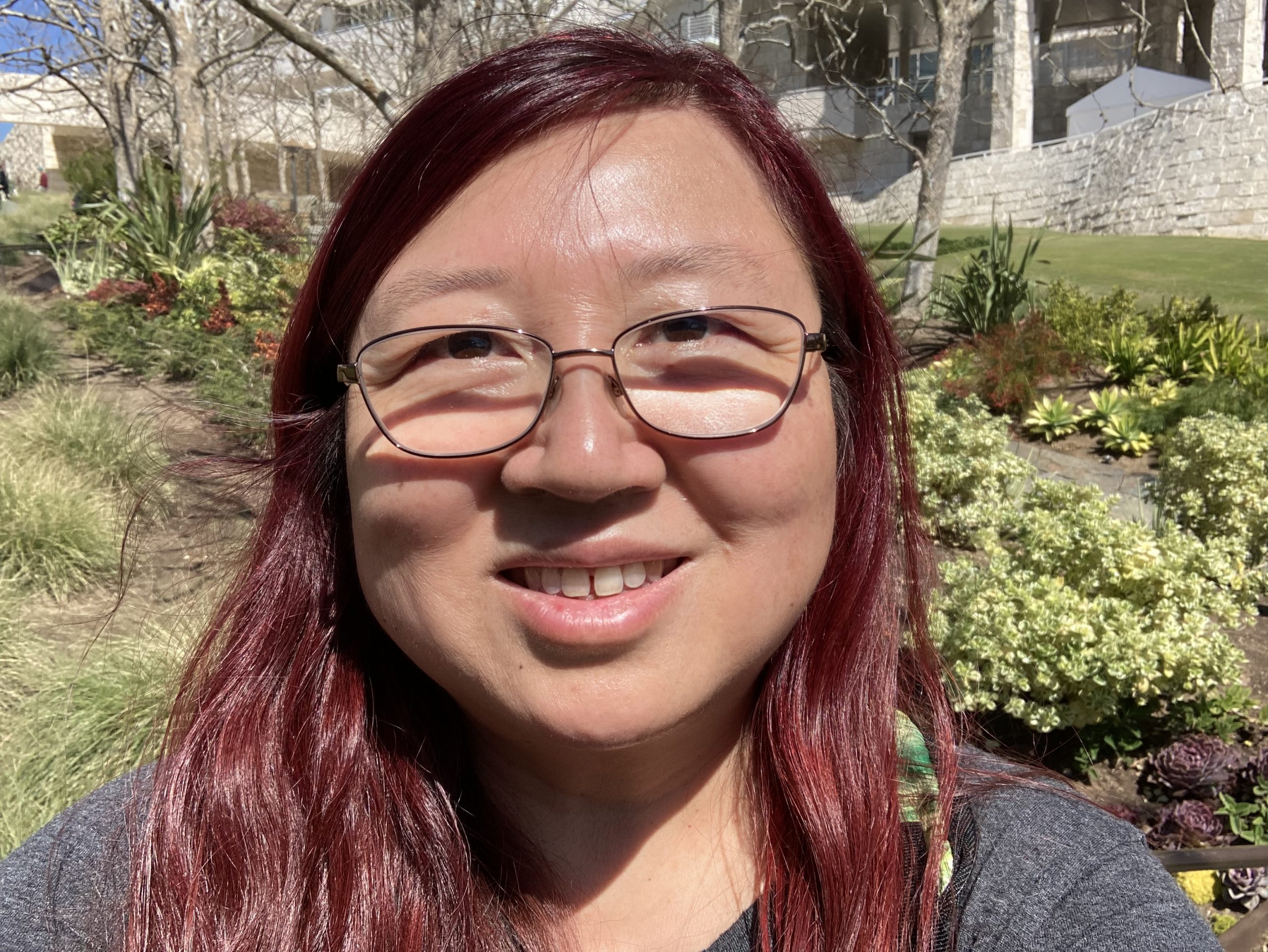
Jing Liu
MIDAS

Elle O’Brien
School of Information

Karandeep Singh
Learning Health Sciences
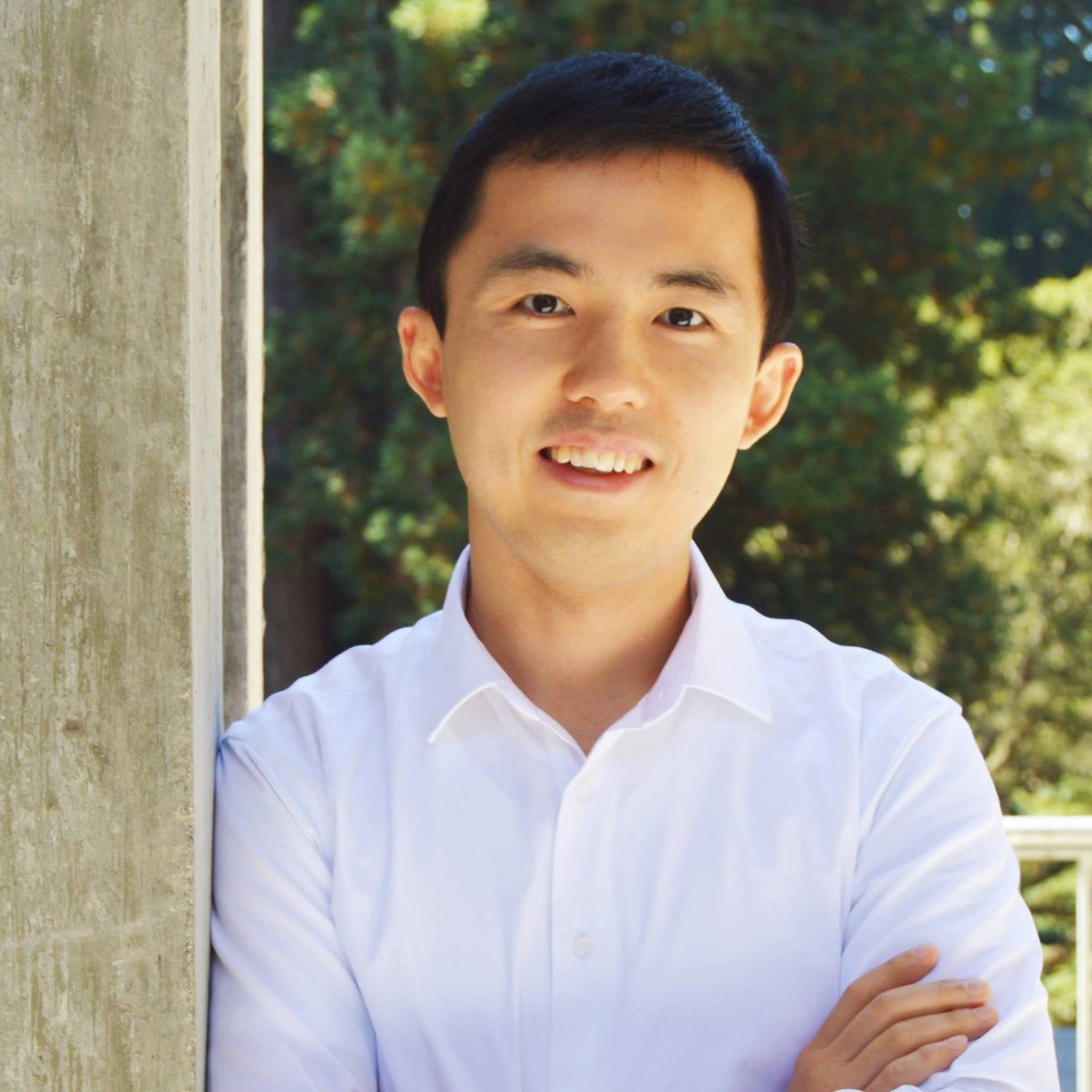
Kai Zhu
School for Environment and Sustainability
Facility Info
- Rackham Graduate School: 915 E. Washington St., Ann Arbor MI 48109
- Parking – INFO
- There are a limited number of metered parking spaces on Washington Street in front of the building, including an accessible space. There is an accessible entrance in front of the building, as well as in the underground parking garage. The garage is accessed from Huron Street (back of building) and is perfect for active loading and unloading only for vehicles with 90″ or lower clearance. No visitor parking is permitted in the Rackham garage.
- Driving Directions
- All programming will be on the 4th floor, accessible via elevators to the east or west side of the building.
- Accessible men’s restroom (4012M) and women’s restroom (4512W) available on the 4th floor. Accessible, gender-inclusive restrooms available on the 1st floor (1514T) and the 3rd floor (3132T & 3134T).
- Amphitheatre: most of the programming will occur in the Amphitheatre. This room has limited accessible seating via the central, north entrance; additional accessible seating is available and programming will be re-streamed synchronously in the East and West Conference rooms on the same floor. Staff volunteers will be on hand to direct and answer questions.
- No food or drink is allowed in the Amphitheatre.
- Standing room is not allowed in the Amphitheater. Guests will be directed to the East and West Conference rooms if Amphitheater reaches capacity.
- Unfortunately, we are not able to offer a hybrid option at this time for remote participants. Program sessions will be recorded and made available after the Summit. Please allow up to 2 weeks for recordings to be made available. Recordings will include professional transcription and captioning.
Contact Us
If there is an accommodation you would like to discuss with program staff, please send us an email at [email protected].




